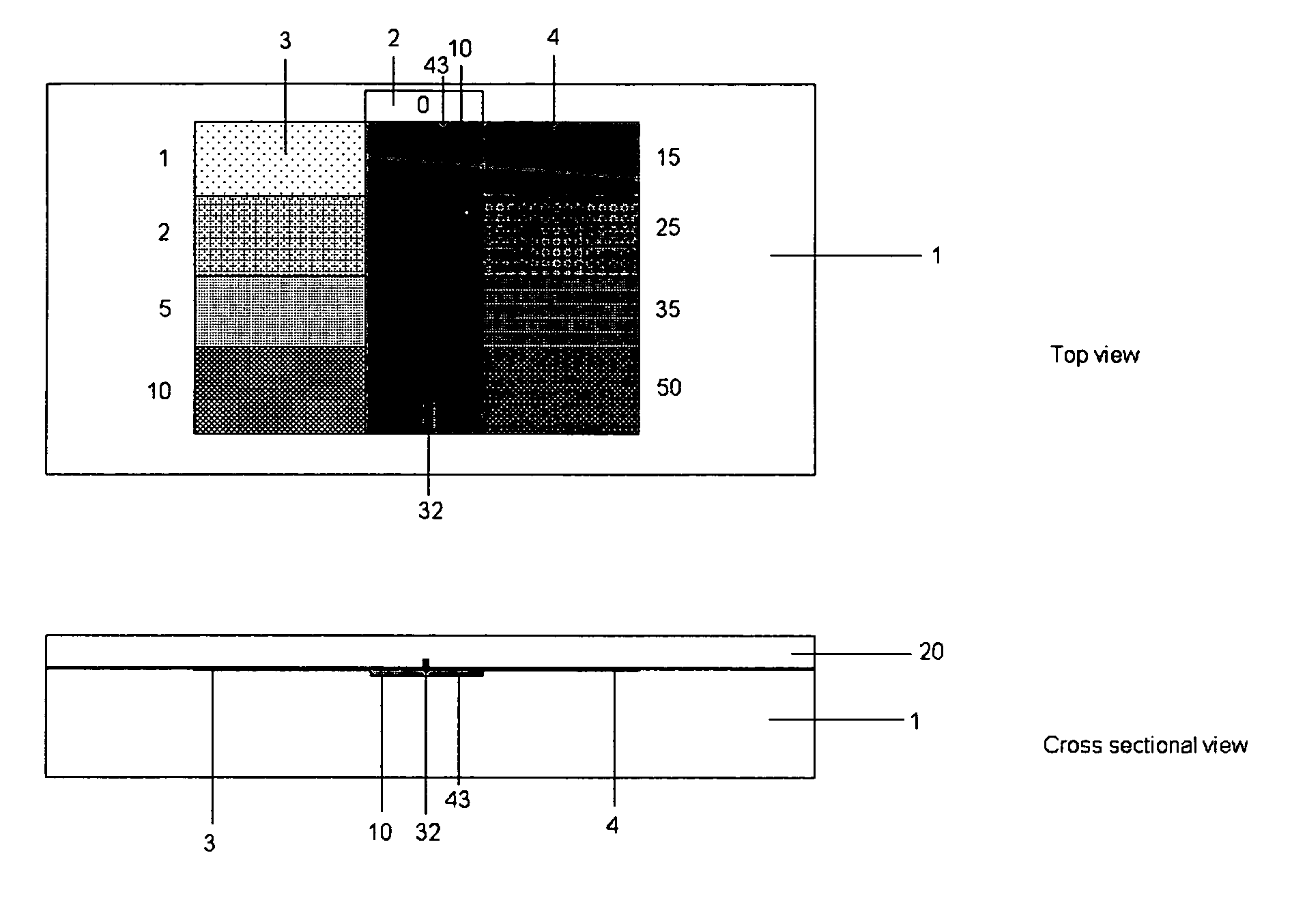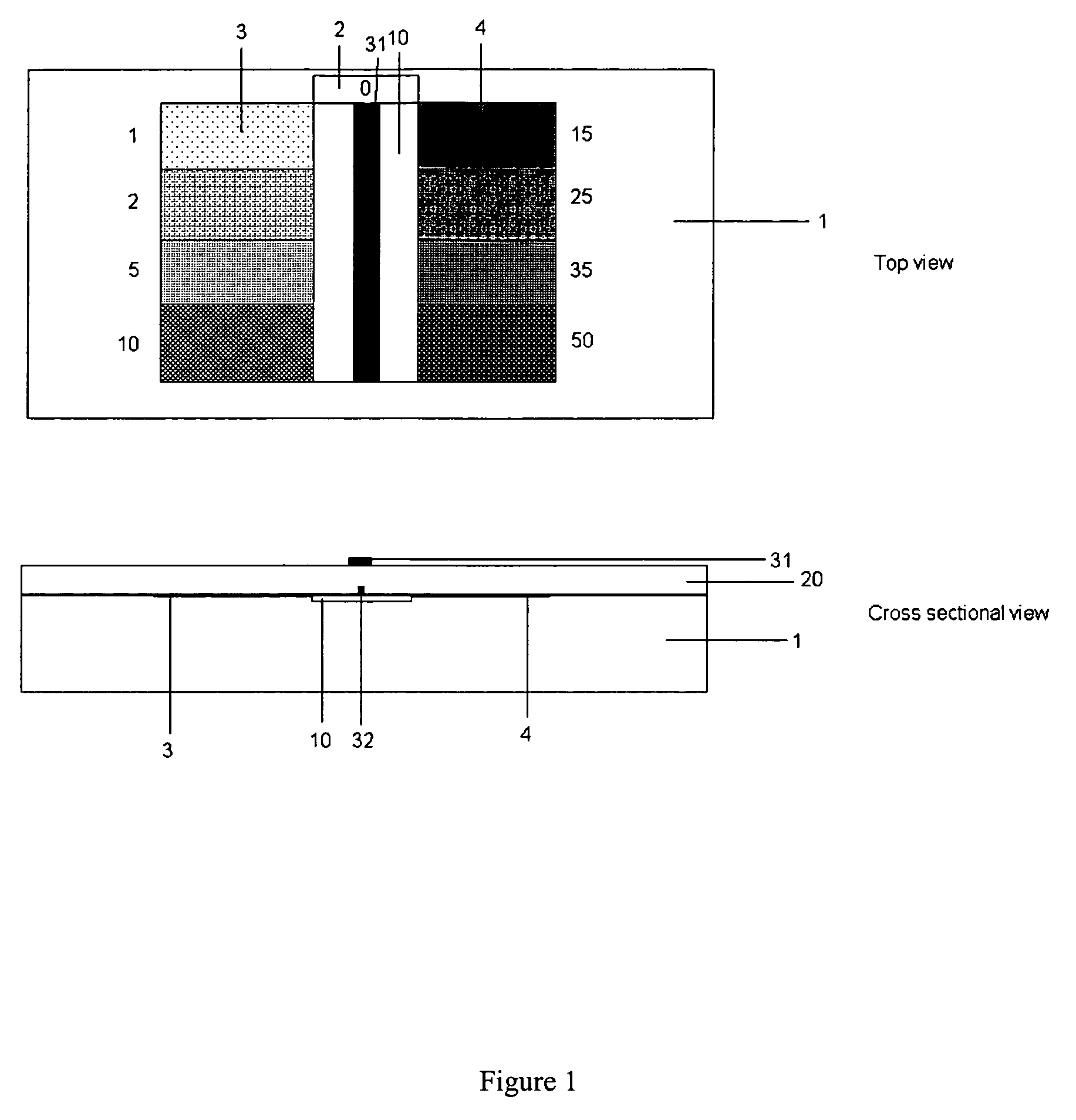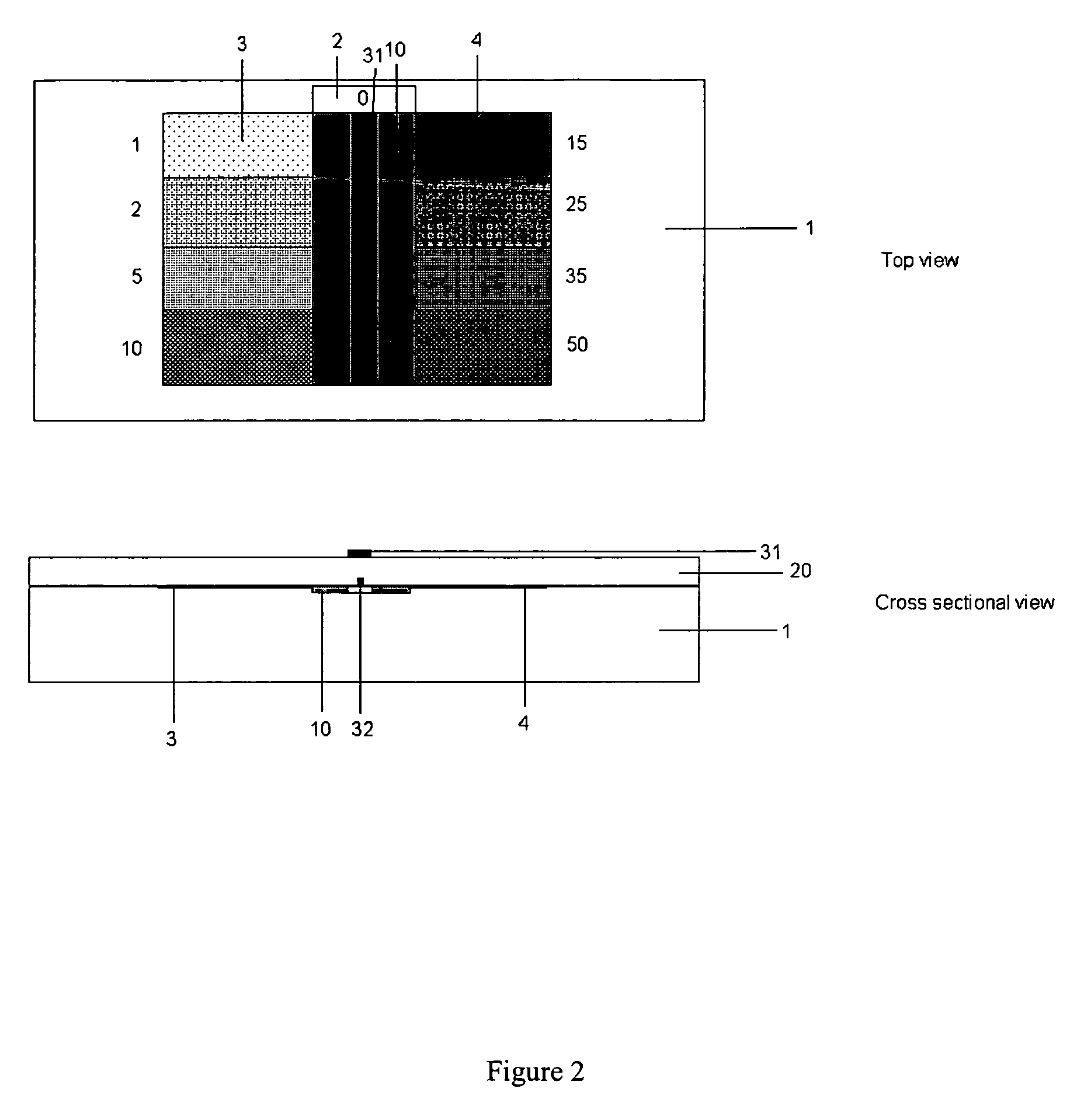Detector for a UV false positive of radiation sensitive devices
a radiation sensitive device and detector technology, applied in glass dosimeters, instruments, material analysis, etc., can solve the problems of potential false signals and the sensing strip of sirad is still sensitive to prolonged exposure to uv and/or sunligh
- Summary
- Abstract
- Description
- Claims
- Application Information
AI Technical Summary
Benefits of technology
Problems solved by technology
Method used
Image
Examples
example 1
Making of a Dosimeter with Removable Layer
[0057]A transparent 50 micron thick UV absorbing polyethylene terephthalate (PET) film having a pressure sensitive adhesive and release paper on one side was printed on the other side with thin 2 mm×25 mm layers using black and white inks from different suppliers. The black bars were printed with an ink jet printer and also with a toner printer. The printed film was used as a top protective layer. Sensing strips were prepared by cutting an approximately 200 microns thick coating of a diacetylene / binder on a polyester film into 8 mm×25 mm segments. The sensing strips were placed in cavities of credit card sized plastic cards pre-printed with a color reference chart. The release paper of the printed top protective PET film was removed and film was applied on to the card in such a way that the opaque bar (2 mm×25 mm) is over and at the center of the sensing strip (8 mm×25 mm). The opaque / black bars printed with inkjet ink were easy to scratch o...
example 2
Detecting False Positive from Genuine X-ray Exposures for 0-1,000 rads SIRAD Cards
[0058]A number of 0-1,000 rad SIRAD cards were made with black scratch off bars printed by a screen printing process on the sensing strip as shown in top left hand photo of FIG. 6 were made in accordance with Example 1. The cards were first exposed to sunlight for a week as shown in bottom left hand side photo and then with 250 rads of 100 KeV X-ray. The visible portion of sensing strips had developed essentially identical blue color and it was impossible to differentiate X-ray exposed card from that exposed to UV / sunlight. After the exposures, a portion of the scratch off bars was scratched off. The color of area of the sensing strip under the scratch off bar of the X-ray exposed card was blue and the intensity of the blue color was identical to the rest of the sensing strip as shown in the top right hand photo of FIG. 6. The color of area of the sensing strip under the scratch off bar of the sunlight...
example 3
Differentiation of False Positive and Genuine X-ray Exposures in 0-200 rads SIRAD Cards
[0059]Commercially available 0-200 rads dosimeter cards made by JP Laboratories, Inc, Middlesex, N.J. were printed with an opaque black bar going across the sensing strip. The cards were then exposed (1) to sunlight for a day, (2) with 50 rads of 100 KeV X-ray and (3) with sunlight for a day and 50 rads of X-ray. The visible exposed areas of the sensing strips developed blue color. After the exposures the opaque bars were removed either by scratching off. The area of the sensing strips under the scratched off bar of the dosimeter cards exposed to sunlight were white (very similar to unexposed control), while those exposed to X-ray were uniformly blue. The area of the sensing strips under the scratched off bar of the dosimeter cards exposed to both sunlight and X-ray were lighter blue compared to the rest of the sensing strip and equivalent to that exposed to 50 rads of X-ray.
PUM
| Property | Measurement | Unit |
|---|---|---|
| wavelength | aaaaa | aaaaa |
| wavelength | aaaaa | aaaaa |
| thick | aaaaa | aaaaa |
Abstract
Description
Claims
Application Information
 Login to View More
Login to View More - R&D
- Intellectual Property
- Life Sciences
- Materials
- Tech Scout
- Unparalleled Data Quality
- Higher Quality Content
- 60% Fewer Hallucinations
Browse by: Latest US Patents, China's latest patents, Technical Efficacy Thesaurus, Application Domain, Technology Topic, Popular Technical Reports.
© 2025 PatSnap. All rights reserved.Legal|Privacy policy|Modern Slavery Act Transparency Statement|Sitemap|About US| Contact US: help@patsnap.com



